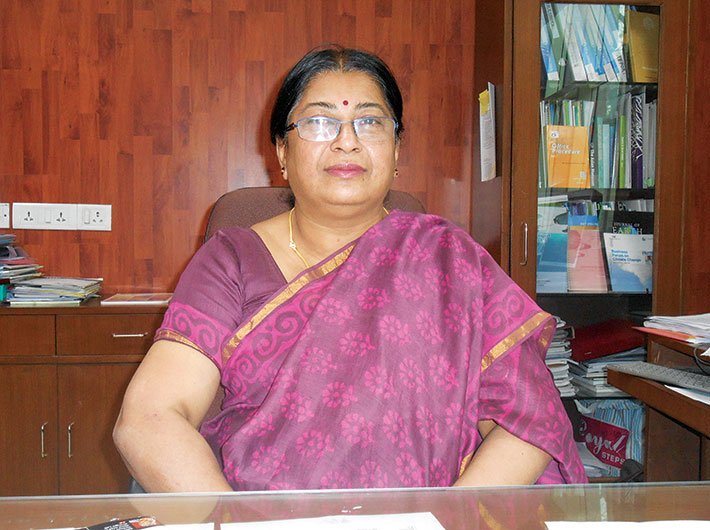Top scientist in the earth sciences ministry demystifies its lesser known but most crucial tasks
The ministry of earth sciences (MoES) is one of the youngest – and one of the least talked about – wings of the government. It looks after a myriad of scientific and technical activities, mostly dealing with earth system science. Its scientists and officials rarely make headlines, but their apparently obscure work often matters to all of us in our day-to-day lives. For example, they try to improve forecasts of weather, monsoon, climate and natural disasters. They also explore polar regions as well as seas around India. To make sense of what they do, Puja Bhattacharjee met Swati Basu, scientist ‘G’, MoES. Excerpts from their chat:
Tell us about your role and responsibilities.
I am the scientific secretary for earth system science organisation (ESSO), which is an executive arm of the MoES. Under the ministry, we have 10 organisations – all of which come under the broad umbrella of ESSO. Our plethora of activities caters to a large number of end-users like the farming and fishing communities. Aviation, power and water sector also require weather forecast for their proper functioning. As the scientific secretary, I have to look after budgeting, planning and international cooperation and prioritise activities and programmes.
Another important aspect of earth sciences is the Arctic and the Antarctic regions. Although far away, they impact Indian monsoons.
Monsoons are possibly the most critical factor for the Indian economy, so weather forecast is also a critical factor for the country. But this is one area about which people often complain. Is there a way to improve it?
Weather forecast is being improved now. The entire process is based on coupled modelling systems. The ocean and the atmosphere do not exist in silos. To monitor the ocean and the atmosphere, MoES has separate organisations which share information for better forecasting. The ocean observations go in as inputs to the atmospheric model and the output, subsequently, from the atmospheric model goes to the ocean system to understand how oceans behave.
And yet, there is large uncertainty in predictions. What are the current standards on prediction?
Uncertainty is part of forecasting and is a big challenge. There is a definitive time scale associated with weather prediction. Accordingly, we define short-range (1-3 days), medium-range (3-10 days) and long-range (over a few months) prediction. We have made a lot of improvements up to the medium-range scale, wherein we have used high-resolution models (23/23 km model vis-à-vis a 150/150 km model). In addition, initial conditions for predicting the weather have been enhanced with the help of satellite data. More than 90 percent of the data is from satellites now. We have a plan to combat uncertainty as well.
What facilities do we have for weather forecasting?
We have our own ships and are planning to have our own aircraft. They are going to be very useful in not only regular predictions but also in observations during tropical cyclones. India is going to procure a polar research vessel which can cut across the ice and take observations. The proposal has got the cabinet’s approval. The entire process will take at least two years and boost India’s presence in the international arena.
How well can MoES predict earthquakes?
So far no country has been successful in predicting earthquakes. We have done microzonation in the entire country. That is an attempt to map which areas are vulnerable to which type of earthquake. The best way to minimise the damages from earthquakes is by following building norms. The epicentre of an earthquake cannot be predicted in advance. We have placed sensors in regions which are given to frequent earthquakes. We will observe and study the changes that take place to understand the precursors to an earthquake.
How different are the challenges in predicting monsoons and predicting natural disasters – which are becoming more frequent in recent years?
Right now predicting sudden changes in a small area is challenging for us. So is prediction of high impact weather, that is, very heavy rainfall over a very short duration. We need very high-resolution models to predict changes in hilly regions.
Which area needs improvement in this matter?
‘Uncertainties’ have to be improved. Higher resolution models are needed. Many ensemble members are a challenge. [In ensemble forecasting, a computer model is run multiple times to generate multiple forecasts. A set of such forecasts is called an ensemble while each forecast within the set is called an ensemble member.] Right now we are running 25 members and are planning to go up to 44. If 90 percent of the members are saying the same thing, we can say with surety that a particular event is bound to happen. Another aspect that needs to improve is the coupled ocean-atmosphere model. We have to study how the ocean is evolving with time and what is its interaction with the atmosphere.
Climate change is a big global challenge of our times. How is MoES contributing to the nation’s efforts to counter it?
We are trying to predict various climate scenarios which are likely to take place in the future. We cannot reverse climate change. The only thing we can do is to better predict those changes and take steps to combat them. For example, agricultural practices have to be realigned depending on the dryness or wetness of certain regions.
India has secured an observer status in the Arctic. We have installed our observing systems in the Arctic Ocean. Scientists have collected samples by drilling ice and are studying the changes taking place over the past hundreds of years, and are trying to deduce the climatic changes.
Also, industrialisation has to move forward with green energy. In order for development to take place in a sustained manner, industry and scientists have to interact continuously.
Particulate matter pollution in India is rising to alarming levels. Recent studies suggest we have some of the most polluted big cities of the world. Does your ministry have a role in combatting pollution?
We had installed observing systems during the Commonwealth Games in 2010. They complement the ones put by the central pollution control board. Our initial assessment does not show any alarming results. During certain times, the values do go up. Also the pollution may vary locally. That need not stay for a long time as winds disperse it. We are in the process of conducting a systematic analysis.
The observing systems have to be calibrated regularly. The kind of impact particulate matter pollution will have on human health depends on how long the high amount persists. A relatively low value over an extended period of time makes more impact on health.
During winters, when there is practically no wind, the boundary layer (the atmospheric in which we live that ranges from 1 km to 1.5 km) is thin. At that time it has the most adverse impact as pollutants are trapped in a small space. Construction in a controlled manner could be one of the solutions. We will come out with more specific recommendations.
What kind of support do you need from the government?
We need sustainability of all our observing systems, augmentation of computational facility and development of skilled manpower. This is a much specialised area and needs continuous induction of people.
Since your subject area goes beyond national boundaries, do we partner with other countries for research?
We have collaborations on developing and borrowing technology. We have 20 MoUs for the purpose. We are also providing forecast to our neighbouring countries – Bangladesh, Bhutan, Myanmar, Nepal, Sri Lanka and Thailand. We are also collaborating with the Regional Integrated Multi-Hazard Early Warning System (RIMES) for Africa and Asia in the Indian Ocean region.
puja@governancenow.com
(The interview appears in the January 16-31, 2016 issue)

